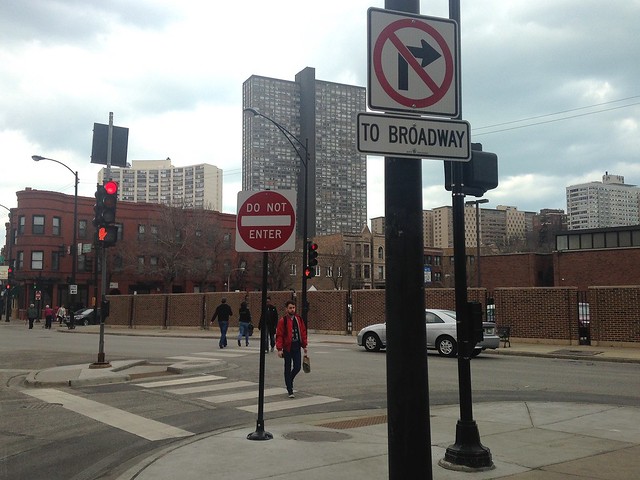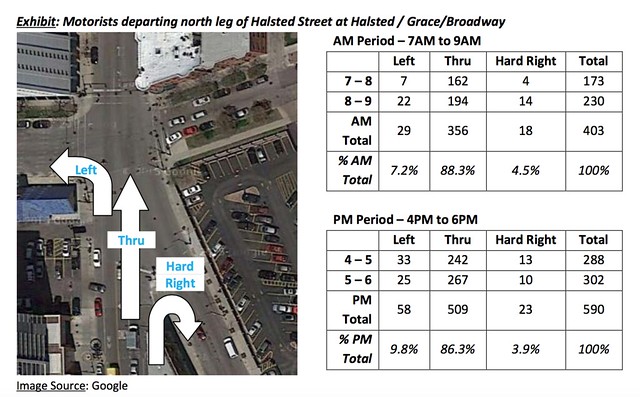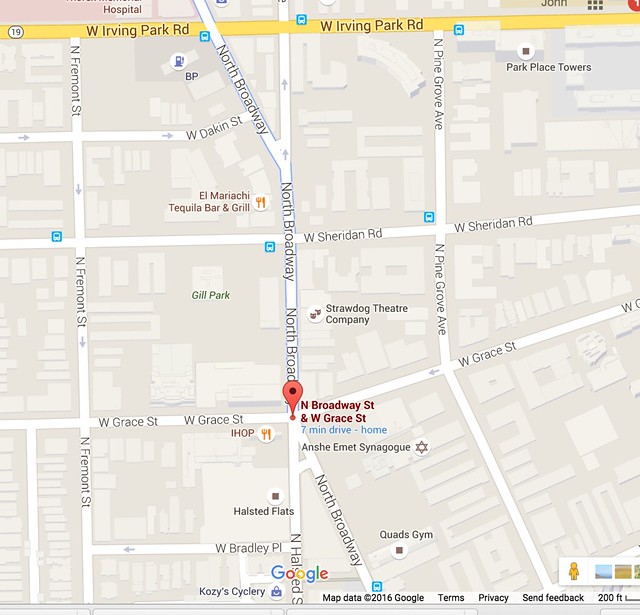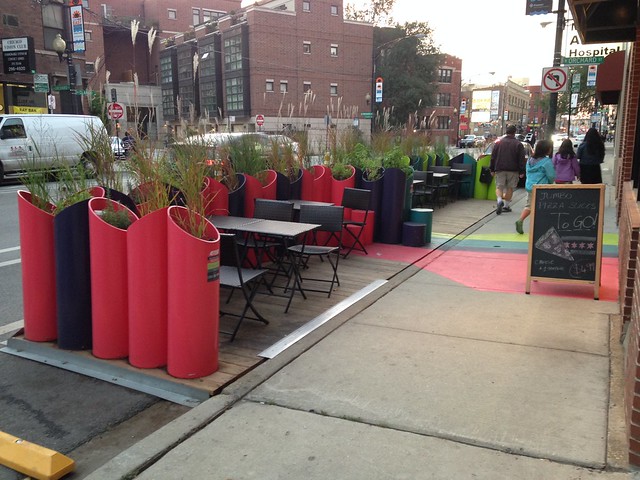
Since Monday, when I wrote about the controversial new right-turn ban at Grace/Halsted/Broadway, I’ve gotten background from the key players about how this change came about.
The Chicago Department of Transportation recently put up “Do Not Enter” and “No Right Turn” signs by the slip lane that previously allowed drivers to make quick turns from northbound Halsted to southeast-bound Broadway. Slip lanes, also called channelized right turns or “porkchop islands,” are problematic because they allow motorists to whip around corners at high speeds into the path of people on foot, and they create longer pedestrian crossing distances.
But some residents, merchants, and the Lakeview East Chamber of Commerce aren’t happy about the turn ban, and the chamber has launched an online petition asking CDOT to take down the signs.
CDOT approached 46th Ward alderman James Cappleman about the turn ban earlier this winter, explaining that the department is trying to eliminate slip lanes throughout the city in order to improve pedestrian safety and walkability, according to Cappleman’s chief of staff Tressa Faher. “Alderman Cappleman wants to do whatever is safest for the entire community -- complete streets are a priority for him,” she says.

CDOT spokesman Mike Claffey sent me a document the department provided to Cappleman explaining the reasoning behind the right turn restriction. As the document outlines, prior to installing the signs, CDOT staffers conducted turning movement counts of northbound motorists on Halsted on Thursday, October 22, 2015 during the morning and evening rush hours.
They found that, even during the busiest hour, 8 to 9 a.m., only 14 northbound drivers made the hard right turn onto Broadway. Overall, only 4.5 percent of all northbound motorists used the slip lane during the a.m. rush, and a mere 3.9 percent used it during the p.m. rush.
CDOT decided to try banning the right turn as a test, in advance of a street repaving project on Broadway between Belmont and Irving Park, slated for late 2016 or early 2017. If the test is deemed a success, the slip lane will be replaced by a curb extension during the road project.
The document notes, as I did in Monday’s post, that northbound drivers on Halsted who need to access the block of Broadway south of Grace can do so by turning east on Waveland, a block south of Grace. In addition, CDOT points out that there are several options for northbound motorists who overshoot Waveland to return to Broadway by using the surrounding street network.

The petition also argues that the turn ban is a problem for people attending services at Anshe Emet Synagogue, located at the southeast corner of Grace/Halted/Broadway, as well as parents dropping off their kids at the associated day school, and anyone else who frequents or live in the area. The Chamber also claims that the change creates a “hardship for small business” and will cause more congestion during baseball season at nearby Wrigley Field.
According to Faher, Cappleman’s staff has met with the chamber and residents at least four times to discuss the effects of the turn restriction. CDOT staffers attended one of the meetings in February.
“The CDOT people at the meeting couldn’t have been nicer,” says Maureen Martino, executive director of the chamber told me. “But it’s just not right to close an access point to one of our business districts.”
Of course, making this intersection safer and easier to walk across improves access to the retail strip for people on foot. I checked out the intersection lane twice this week during non-rush hours. While CDOT had counted no more than 14 drivers an hour using the slip lane, I saw almost that many people walking across the slip lane during each roughly 15-minute interval.
Martino argues that CDOT would have seen more cars making the right turn if the counts were conducted during services at the synagogue or school pick-up times, or during Cubs season. “And there’s going to be more activity in the neighborhood after they open the new plaza at Wrigley Field,” she says.
She noted that the chamber has generally been very supportive of pedestrian safety measures and public space improvements. They were instrumental in getting two People Spots installed on the 2800 block of North Clark, and they were supportive of the new “Curbside Café” ordinance that allows restaurants and cafes to set up private seating areas in the street.

Martino added that she would rather the city had turned its attention towards fixing the dangerous five-way intersection of Barry, Halsted, and Clark, about a mile south. I think anyone who’s familiar with that wide, confusing junction would agree it needs to be made safer for all road users.
“But there hasn’t been a problem with [Grace/Halsted/Broadway] being unsafe, so why are we doing this?” Martino says. According to Steven Vance’s Chicago Crash Browser website, based on Illinois Department of Transportation data, there were three reported pedestrian crashes at Grace/Halsted/Broadway between 2009 and 2013.
CDOT’s Mike Claffey says the department will continue to perform field observations to determine any potential impacts the right-turn ban is having on area traffic, with special attention paid during services at the temple and other special events. They plan to meet with Cappleman, the chamber, and other local stakeholders in April or May to present their findings.





